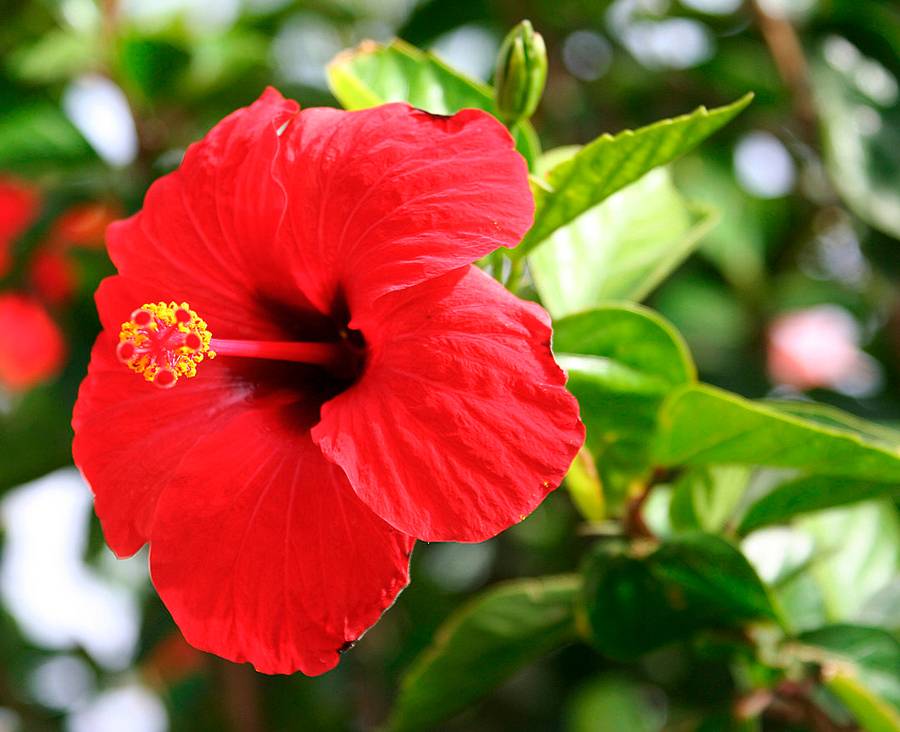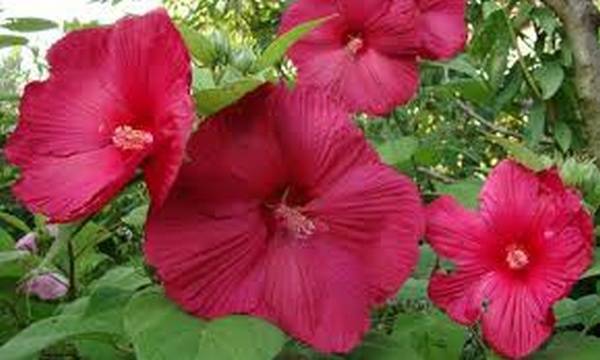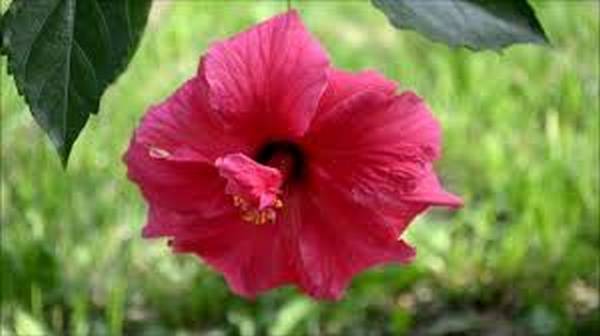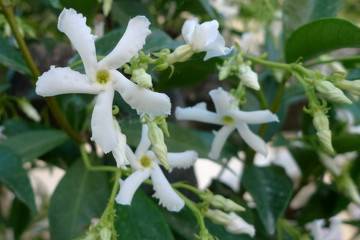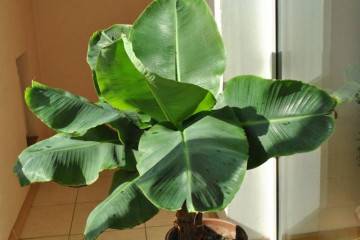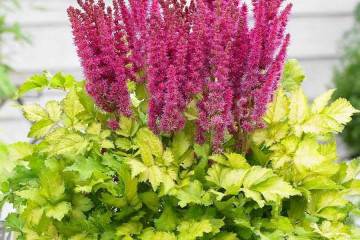Chinese rose or indoor hibiscus - home care
Content:
The Chinese rose, or hibiscus flower (Latin name for Rosa Sinensis) is one of the most common plants that is popular among professional flower growers and amateurs. Belongs to the Malvov family, a genus of hibiscus.
The origin and appearance of the Chinese rose
The homeland of the indoor hibiscus flower is the southern part of China and northern Indochina. It grows in subtropical and tropical latitudes. Experienced growers know that hibiscus is as spectacular as a rose, but there are no direct family ties between them. The name "Chinese rose" stuck to him due to the similarity of the leaves, which have a serrated shape characteristic of the rose, as well as their bewitching beauty, buds and flowers. The crown of the hibiscus is covered with glossy leaves of rich green color. The woody trunk gives it the look of a standard tree.
During the flowering period, the plant is covered with large buds. Their stamens grow together with the pistils, thus forming a single rod that extends beyond the petals surrounding it. The color of the inflorescences is determined by the variety. Initially, single small buds are formed, which, after full disclosure, become flowers that resemble in their shape a wide bowl, the dimensions of which can reach 14 cm in diameter. The flower lasts for 2 days, after which it begins to fade gradually. With proper care, the flowering period can last from spring to late fall.
Types and varieties of Chinese rose
There are about 300 varieties of the Chinese rose.
Marsh hibiscus
Marsh hibiscus is unpretentious, characterized by abundant flowering. The plant has managed to adapt even to the harsh Russian climate and is actively growing within the Moscow region. A shrub growing in a subtropical climate was able to take root in the northern latitudes, where it is mainly grown as a houseplant. But in order to get especially large and flowering specimens, hibiscus is grown in the open field. The main conditions for breeding in this case are the presence of special agricultural technology, a well-chosen landing site.
When optimal conditions are created, it can grow up to 2.5 m in height with a crown width of up to 1.8 m. It is distinguished by a straight stem, dense and green foliage. The bottom of the leaf plate is usually light and pubescent. Inflorescences can be from pale pink to bright purple, with dotted bright blotches. The plant is capable of propagating by cuttings or seeds.
Terry hibiscus
This representative of the Malvov family, unlike the usual Chinese rose, has larger flowers, often of bright yellow color.
Until the plant has reached its maximum growth, it should be replanted once a year (in spring), gradually choosing a larger pot. A fully formed plant needs replanting once every 4 years. The soil for hibiscus is chosen with a neutral acidity index.
Hibiscus mutable
Under natural conditions, this plant can reach 4 m in height. On average, the changeable hibiscus grows 30 cm in height and 35 cm in width per year. Differs in an umbrella crown and a branched trunk, large leaves of saturated green color. In the process of home breeding, it does not exceed 3 m in height.
The hibiscus is fed every three weeks. In the spring months, the best fertilization option will be mixtures with the addition of sodium and nitrogen, during flowering - mineral fertilizers with the addition of iron.
Cooper's hibiscus
This type of Chinese rose got its name thanks to the man who first brought it to England. The main feature of this plant is that the leaves are able to change their color depending on the intensity of illumination and the temperature of the environment.
Cooper's hibiscus blooms actively in a lit room, but not in direct sunlight. With a lack of light, the crown suffers, and the splendor of the flowering is significantly reduced. The optimum air temperature in the room in which such a flower grows is + 20-25 degrees.
Variegated hibiscus
Variegated hibiscus has a large number of varieties, each of which is characterized by a specific shape and color of flowers. Leaves can be up to 15 cm long. Flowers are often bright red in color. Suitable for growing in conservatories and indoor conditions.
Variegated hibiscus prefers rooms with good lighting. With a lack of it, the flower will grow slowly, and the flowering will become less lush. The optimum temperature for growing is + 20-25 degrees.
Hibiscus red
This is one of the most unpretentious species, therefore, it is quite common. But unlike other members of the family, it has one distinctive feature: the petals of its flowers are located on two levels. The lower tier consists of 24 petals, the upper one of 16.
Hibiscus yellow
This is one of the most capricious species. This plant is characterized by a powerful trunk, abundant flowering. The flowers are yellow, with characteristic streaks of red.
Hibiscus white
White hibiscus flowers have a special charm. Their main feature is that flowers can change color from white to pink.
In the wild growing conditions on the territory of the Crimea and the North Caucasus, the treelike white hibiscus Syrian White Chiffon is often found. This Syrian hibiscus can be grown outdoors, planting and caring for it is quite simple and does not require special knowledge.
Less common is the Syrian Chinese rose Matilda. There is another variety of white hibiscus - Chinese. It is a woody shrub up to 6 m high with wide green leaves. The flowers of the plant form massive clusters.
The difference between hibiscus and hibiscus
Hibiscus is a pure hibiscus drink without any additives. It is distinguished by its bright red or burgundy color, sweet-sour aftertaste. Made from Sudanese rose flowers. What is the difference between carcade and hibiscus? The plant itself is called hibiscus, and hibiscus is the part of its flower that is used to make a drink.
Transplanting a plant after buying into a pot
Hibiscus is an unpretentious plant, but you still need to know some subtleties in order to properly transplant it at home.
During the transplant process, it is important to observe the following conditions:
- Soil composition. Its acidity should be close to neutral. A mixture of sand and peat in a 1: 1 ratio is best. To improve drainage, particles of charcoal are added to the soil, and leafy soil for nutrition.
- Correctly selected flower pot. The best choice would be a pot with a height of 7-10 cm. If we are talking about a formed plant, then the size of the new dishes should exceed the dimensions of the previous one by 5-7 cm. The material from which the vessel is made is also extremely important. The Chinese rose thrives in ceramic pots and wood pots.
- Landing time. The best time to transplant is spring. It was during this period that the flower is actively growing and gaining strength.
The following algorithm of actions will help to transplant the plant correctly:
- A small hole is made in the bottom of the pot to remove excess moisture.
- A drainage layer with a height of 4-5 cm is laid on one.
- The soil is filled up.
- The plant is placed in a pot. A distance of 5 cm should be maintained from the earthen clod to the top of the dishes.
- The plant is given the desired position by falling asleep or removing excess soil.
- All existing voids between the pot and the plant are filled with soil.
- The pot is placed in a tray, the soil in it is watered abundantly.
- When excess water drains, remove the pan.
Reproduction of the Chinese rose, or hibiscus
The propagation of herbaceous hibiscus is carried out in two ways: using cuttings and by growing from seeds.
Propagation by cuttings
To prepare cuttings, young plants with developed shoots and semi-lignified bark are chosen. Shoots are cut diagonally with a sharp knife. The optimal length of the cutting is 15 cm. It must have at least three internodes. The upper part of the cutting is shortened with a straight cut and the lateral leaves are removed. The remaining sheets are cut in half. The lower part of the cutting should be soaked in Epin's solution for a couple of hours.
The dishes intended for planting herbal hibiscus cuttings are filled with loose soil. For better rooting, bone meal is added to it. Before planting, the soil is well moistened. To maintain optimal water and temperature conditions, a plastic bag is put on the container with cuttings. The bag must be removed regularly to ventilate the soil and water. With proper care, roots will appear on the cuttings after a few weeks. When the root system is well formed, the cuttings should be transplanted into separate pots.
Seed propagation
To grow hibiscus from seeds, you will need: plastic or wooden dishes, nutrient soil, a spray bottle, glass and polyethylene film.
The sequence of actions is as follows:
- The seeds are placed in a solution of potassium permanganate (1 g of the substance is added to 100 ml of water).
- It is kept for 1 hour, after which it is sprinkled with a large amount of wet sand and placed in the refrigerator for 2 weeks.
- Expanded clay is spread on the bottom of the pot (layer height 2-3 cm), the rest of the container is filled with moist soil and tamped a little.
- The seeds are planted in a pot, covered with a layer of soil 1.5 cm, but not tamped.
- The soil is moistened and the dishes with seeds are left in a warm place with a temperature of about +28 degrees.
Hibiscus care at home
Hibiscus is an unpretentious plant, therefore it does not require particularly careful maintenance. When growing it, it is important to maintain the irrigation regime and optimal environmental conditions.
During the period of active flowering, this plant especially needs soil moisture. But excessive watering can also harm (the leaves will begin to fall off), therefore, pots for a room rose should be bought with special holes in the bottom to remove excess moisture. It is necessary to moisten the soil only after it is completely dry.During flowering, moisture should not be allowed to enter the flower itself, since delicate inflorescences react negatively to water. It is also necessary to regularly spray the leaves of the plant. This will help clean them of accumulated dust and prevent various diseases. If dried leaves appear on the plant, you need to get rid of them.
Fertile soil and fertilizers will help the Chinese rose look healthy and attractive. For regular flowering, it must be fed once a month with nitrogen or potassium fertilizers. In order to increase the nutritional properties of the soil, it is covered with mulch.
During the rest period, it is necessary to maintain a comfortable temperature in the room in which the Chinese rose is located and make sure that it remains at + 18-22 degrees. It is at this time that pruning is carried out in order to form the crown and rejuvenate the plant. The number of watering during the dormant period is minimized.
Hibiscus is an unpretentious plant that can decorate any home. The Chinese rose can also be a street flower. If you create all the necessary conditions for it - sufficient lighting, regular watering, timely pruning, top dressing, it will delight its owners with an unusually lush and long flowering.
